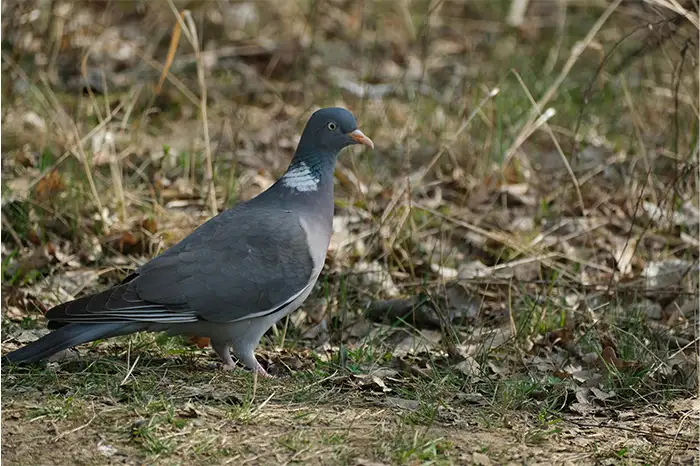Urban environments are often populated by pigeons, and while they may seem harmless, they can negatively impact native bird species and ecosystems. Traditional methods to curb their numbers, such as poisoning and trapping, pose ethical and environmental concerns. This has led to the increased adoption of innovative non-lethal techniques, emphasizing that non-lethal pigeon management is an effective choice for protecting native birds and their habitats.
One method gaining traction is the use of effective strategies for long-term pigeon removal, which includes various deterrents and modifications to the birds’ environment to reduce their population gradually. For example, visual deterrents and exclusion strategies decrease the attractiveness of urban areas for pigeons. These strategies not only preserve the integrity of ecosystems but also align with wildlife protection mandates.
By implementing alternatives to lethal control, cities can protect biodiversity while ensuring that pigeons do not disrupt the balance of local environments. Such approaches have the added benefit of being sustainable and ethically sound, providing a humane solution to an ongoing urban challenge.
Key Takeaways
- Non-lethal pigeon management protects native birds.
- Effective strategies reduce pigeon numbers ethically.
- Sustainable methods align with wildlife protection goals.
Understanding the Impact of Pigeons on Native Birds and Ecosystems
Pigeons, particularly feral ones, can significantly affect both agricultural practices and health. Their presence challenges farmers and carries potential health risks to native birds and humans.
Effects on Crop Cultivation and Farming Communities

Feral pigeons often congregate in large numbers where food is plentiful. Their feeding habits can lead to considerable damage to crops. For farmers, this creates economic burdens by reducing yields and raising the need for pest control measures. Pigeons compete directly with native bird species for food resources, further exacerbating strain on local ecosystems.
In addition to eating crops, pigeons can also spread weed seeds across farming landscapes. The cost of ongoing management to mitigate these effects can become a persistent challenge for farming communities.
Health Risks and Disease Considerations
Pigeons can act as vectors for multiple pathogens. This poses a risk not only to human health but also to the wellbeing of native bird species. Diseases such as histoplasmosis and cryptococcosis have been linked to pigeon droppings, which contaminate both urban and rural areas.
The ability of pigeons to spread diseases makes effectively managing their populations crucial. These health risks underscore the importance of non-lethal pest control strategies to protect both ecosystems and public health. Protecting native birds from diseases potentially spread by pigeons is essential for maintaining biodiversity.
Strategies for Non-Lethal Pigeon Management
Non-lethal pigeon management involves a mix of deterrents, biological measures, and professional support. These strategies help protect native bird populations by controlling pigeon numbers without causing harm.
Implementing Deterrents and Physical Barriers
Deterrents and physical barriers are essential in reducing pigeon presence. Bird spikes and anti-roosting products prevent pigeons from settling on surfaces, making locations less appealing. Bird wire is another effective solution, creating an unstable surface that discourages landing. Visual deterrents, such as reflective objects or decoy predators, can further discourage pigeons from gathering. By altering the environment, these tools play a crucial role in minimizing interference with native birds. It’s essential to tailor these strategies for different areas, ensuring effective pigeon management.
Biological Methods and Reproductive Control

Biological methods focus on controlling pigeon populations through egg interference and other non-harmful measures. Products like birth control for pigeons safely reduce reproduction rates, limiting population growth. This approach minimizes the ecological impact on native bird species. Additionally, deploying birds of prey can serve as a natural deterrent, encouraging pigeons to relocate without physical harm. Combining these methods can offer sustainable, humane solutions for managing pigeon populations effectively.
Engaging with the Pest Control Industry for Area-Wide Solutions
Collaboration with professional pest control contractors ensures comprehensive, area-wide pigeon management. These experts provide insights into integrated strategies, utilizing a balanced combination of tools like deterrents and biological methods. Effective management often requires coordination across multiple properties and public spaces. Partnering with these professionals enhances strategy development, ensuring effective and sustainable control. Area-wide solutions help maintain balance in urban ecosystems, protecting native birds from the pressures of pigeon overpopulation.
Conclusion
Non-lethal methods for managing pigeons effectively contribute to the protection of native bird populations. Techniques such as visual deterrents and physical barriers are humane alternatives that align with sustainable urban management goals. These strategies prioritize ecological balance without resorting to lethal measures.
By focusing on humane pigeon control, communities can mitigate potential damage while supporting biodiversity. This approach not only addresses urban bird management challenges but also fosters a more harmonious coexistence between humans and wildlife.



